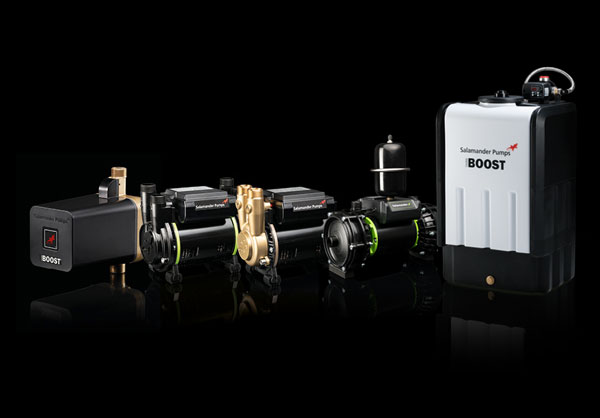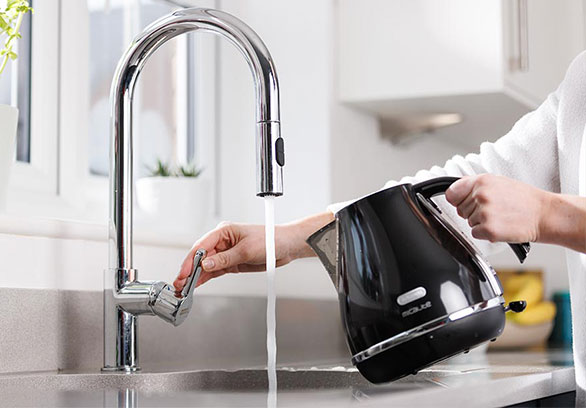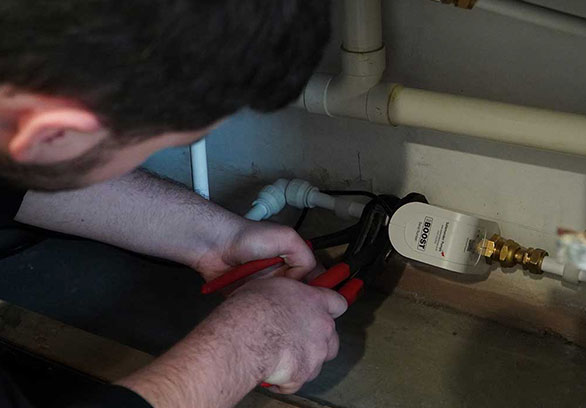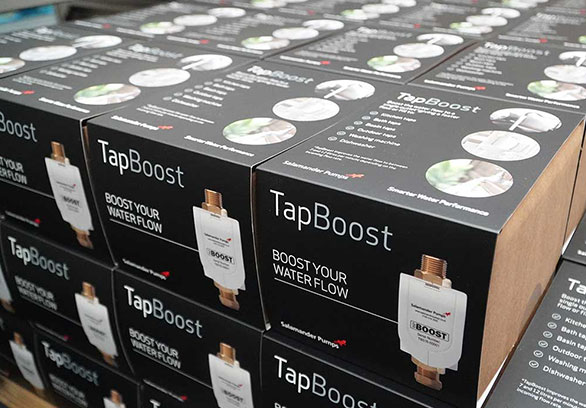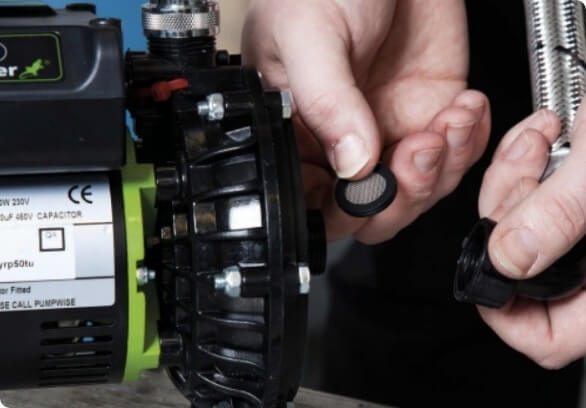Installation
Choosing Between Twin and Single Ended Shower Pumps
If the water flow from a shower is little more than a trickle, installing a shower pump or a whole house pump to boost this flow is a clear solution. However, with such a wide variety of pumps available, selecting the right pump for the job can be tricky.
Shower pumps are available in both single and twin pump designs, but knowing which one is best for the job, and the differences between the two, is crucial when choosing the correct shower pump. Mike Oxley, Training Manager at Salamander Pumps, explains what you need to know when it comes to single-ended and twin-ended pumps.
Twin or single impeller?
The difference between a twin and single pump is the number of impellers. Twin pumps are designed to supply both hot and cold water to showers, bathrooms and whole house installations, while single impeller pumps supply either hot or cold water, to single or multiple outlets. This can often be when the cold water is mains fed and the hot needs to be boosted to match this pressure.
What systems can benefit from a single shower pump?
Single positive head pumps, such as our CT55 Xtra and CT85 Xtra, are used to supply water to individual taps such as baths and basins in a positive head, gravity fed installation. However, they are not suitable to use on mixer showers and taps due to a potential imbalance within the mixer.
In systems where there are outlets that utilise mains cold water but still have the hot water on a gravity fed system, a single universal pump may be required. For example, when a mixer shower or tap is fitted, the difference in pressure between the mains cold water and gravity fed hot water can be quite noticeable. To overcome this issue, only the hot water pressure would need to be boosted to match that of the mains cold water. In these situations, a universal (negative head), rather than a positive head, single impeller pump would be best suited due to the pressure vessel, such as our CT Force 30SU and RP80SU. This is because a positive head pump could experience issues if the mains water was to push back towards the pump, impacting on the effectiveness of the flow switch. The pressure vessel on a universal pump prevents this from being a problem. As well as this, the pump chosen to boost the hot water should match the mains cold water pressure, in terms of its bar rating, as closely as possible, for this reason we have single universal pumps at various pressure ratings. Our RP55SU operates at 1.5 bar pressure, the CT Force 20SU operates at 2.0 bar pressure and the RP120SU operates at 3.6 bar.
Finally, mains fed systems such as combi-boilers and unvented cylinders can be pumped with a single impeller pump, so long as they are pumped into rather than from, and a cold water break tank has been installed. A single negative head pump can supply the cold water into the combi-boiler, and around all non-drinking outlets. Additionally, in larger properties, two single impeller pumps can be fitted after a break tank to supply an unvented cylinder, with one pumping into the cylinder and the other pumping cold around the non-drinking water outlets.
Pumping both hot and cold when the feeds are far apart
In circumstances when you would ideally use a twin impeller pump to boost both hot and cold water, but the feeds are too far apart, two single impeller pumps can also provide a solution.
Twin impeller pumps must be supplied with dedicated hot and cold water feeds from the cylinder and from the cold water tank, however sometimes it can be difficult to get both these dedicated feeds to a twin pump. For example, the pump may be located next to the hot water cylinder but in a location where it’s difficult to get a cold feed to the pump.
When this occurs, the solution can be to install two single pumps, one for the hot water which is located near the cylinder and one for the cold which is located near below the cold water tank. Again, where two single pumps are installed and the system contains mixer, a universal (negative head) pump should be installed.
Boosting water to a larger system than a standard household
Where larger systems are involved, it’s possible to use multiple sets of single impeller pumps to boost water pressure across buildings including hotels, schools, and changing rooms in sports clubs and leisure centres.
For example, small sports clubs sometimes have two sets of changing rooms, each with a set of showers. These set-ups are typically infrequently used but have very high demand when in use. If each set of showers have their own cold-water tank and cylinder, a set of single negative head pumps can be used on both.
